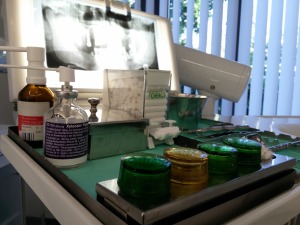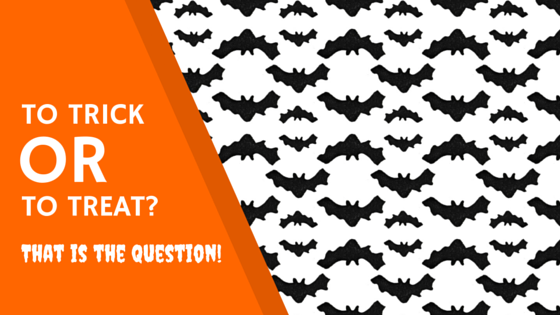Even those with outstanding oral hygiene can fall victim to a few unknown cavity causing culprits. Some of our favorite treats, while seemingly healthy, can be responsible for tooth stains, bad breath and other forms of mouth destruction. Most tooth-conscious consumers already know to limit sugar and steer clear of things like soda and hard candies to keep their dental hygiene top notch. But, here are a few surprising snacks just as capable of damaging your smile.
- Pickles
 Pickles? Yes, while not typically considered something to avoid for oral health, pickles are soaked in vinegar during the pickling process. Vinegar is highly acidic, and acid is notorious for quickly wearing down tooth enamel. So, it’s important to keep this in mind when eating anything pickled. Drinking water or rinsing your mouth can help clear some of the acid once your meal’s over.
Pickles? Yes, while not typically considered something to avoid for oral health, pickles are soaked in vinegar during the pickling process. Vinegar is highly acidic, and acid is notorious for quickly wearing down tooth enamel. So, it’s important to keep this in mind when eating anything pickled. Drinking water or rinsing your mouth can help clear some of the acid once your meal’s over.
- Peanut Butter
You either love it or hate it. You may even be particular in how you eat it, straight from the jar or only in a sandwich… Have you ever tried it with pickles? This childhood staple can be a healthy snack when opting for the “no added sugar” variety. Sugar helps peanut butter better grip your teeth. While it may take some getting used to, it’s a healthier choice all around.
- Dried Fruit
In small doses, dried fruit is a healthy alternative to sweets such as chocolate bars and  ice cream. However, dried fruit has high sugar content, and is often sticky making this treat more likely to get caught in between your teeth for days. When something high in sugar is stuck in your teeth it feeds the bacteria and contributes to dental erosion. Checking nutrition labels can help you weigh the best choice for your sweet tooth.
ice cream. However, dried fruit has high sugar content, and is often sticky making this treat more likely to get caught in between your teeth for days. When something high in sugar is stuck in your teeth it feeds the bacteria and contributes to dental erosion. Checking nutrition labels can help you weigh the best choice for your sweet tooth.
- Crackers
This appetizer favorite is not typically associated with dental problems, yet consuming refined carbs is a known cause of inflammation. The significance here is that inflammation can be linked to a number of dental dangers such as gingivitis and other stages of periodontitis. Limiting carbs such as white bread and pasta, pretzels and white rice can be a treat to your weight, overall health and your smile.
Regular dental check-ups with a dedicated hygiene routine will keep your smile on a healthy track. At a glance, it looks like limiting sugar in all forms is what it’s all about. Remember sticky and pickled foods also pose a risk. No need to stress. While your teeth may thank you for cutting out these items entirely, moderation and awareness will serve you best.
CARQUINEZ DENTAL GROUP
DR. DAVID SHAFER D.D.S.,
DR. BRIAN HOUSTON, D.D.S., AND
SUKHMANI SINGH, D.D.S.
142 East D St
Benicia, CA 94510
Call Us (707)745-8002

 Redness and swelling of the gums may indicate the presence of gingivitis, or early-stage gum disease. Left untreated, it can progress into full blown periodontitis that can threaten your smile and even cause tooth loss. Bleeding from the gums, tooth mobility, and soreness are all signs of periodontitis and should be checked.
Redness and swelling of the gums may indicate the presence of gingivitis, or early-stage gum disease. Left untreated, it can progress into full blown periodontitis that can threaten your smile and even cause tooth loss. Bleeding from the gums, tooth mobility, and soreness are all signs of periodontitis and should be checked. There are several sources of
There are several sources of  When it comes to solutions, anything not addressing the presence of bacteria is a purely cosmetic fix. This includes gum, mints, and similar – sorry! The solutions very much depend on the specific source, and may be as easy as improving your general oral hygiene routine, or it could require a
When it comes to solutions, anything not addressing the presence of bacteria is a purely cosmetic fix. This includes gum, mints, and similar – sorry! The solutions very much depend on the specific source, and may be as easy as improving your general oral hygiene routine, or it could require a  The holidays are infamous for being diet-breakers, but let’s not forget the effect excessive sweets can have on your oral health! Don’t worry, we aren’t going to convince you to pass on pecan pie or skip the cider; however, it is important to continue practicing healthy habits, even with some well-deserved indulgences peppered into your seasonal celebrations. Sugar affects everyone’s teeth, no matter how old. Younger children’s smiles are still in the process of development, which means they need added care throughout the growing stages.
The holidays are infamous for being diet-breakers, but let’s not forget the effect excessive sweets can have on your oral health! Don’t worry, we aren’t going to convince you to pass on pecan pie or skip the cider; however, it is important to continue practicing healthy habits, even with some well-deserved indulgences peppered into your seasonal celebrations. Sugar affects everyone’s teeth, no matter how old. Younger children’s smiles are still in the process of development, which means they need added care throughout the growing stages. When teeth are still in development, the story can be a bit different. The above still applies, but the stakes are higher during the formative years of cutting teeth. It isn’t uncommon to hear “oh, they’re just baby teeth”, but that couldn’t be farther from the truth. Child tooth decay is a rampant condition and, although completely preventable, is five times as common as asthma. It’s entirely possible for the infection to spread beneath the gum line, and compromise the healthy adult teeth growing below. Until children are a certain age, it’s imperative for parents to teach sustainable healthy habits. Fortunately, we have a tip or two for the whole family!
When teeth are still in development, the story can be a bit different. The above still applies, but the stakes are higher during the formative years of cutting teeth. It isn’t uncommon to hear “oh, they’re just baby teeth”, but that couldn’t be farther from the truth. Child tooth decay is a rampant condition and, although completely preventable, is five times as common as asthma. It’s entirely possible for the infection to spread beneath the gum line, and compromise the healthy adult teeth growing below. Until children are a certain age, it’s imperative for parents to teach sustainable healthy habits. Fortunately, we have a tip or two for the whole family!


